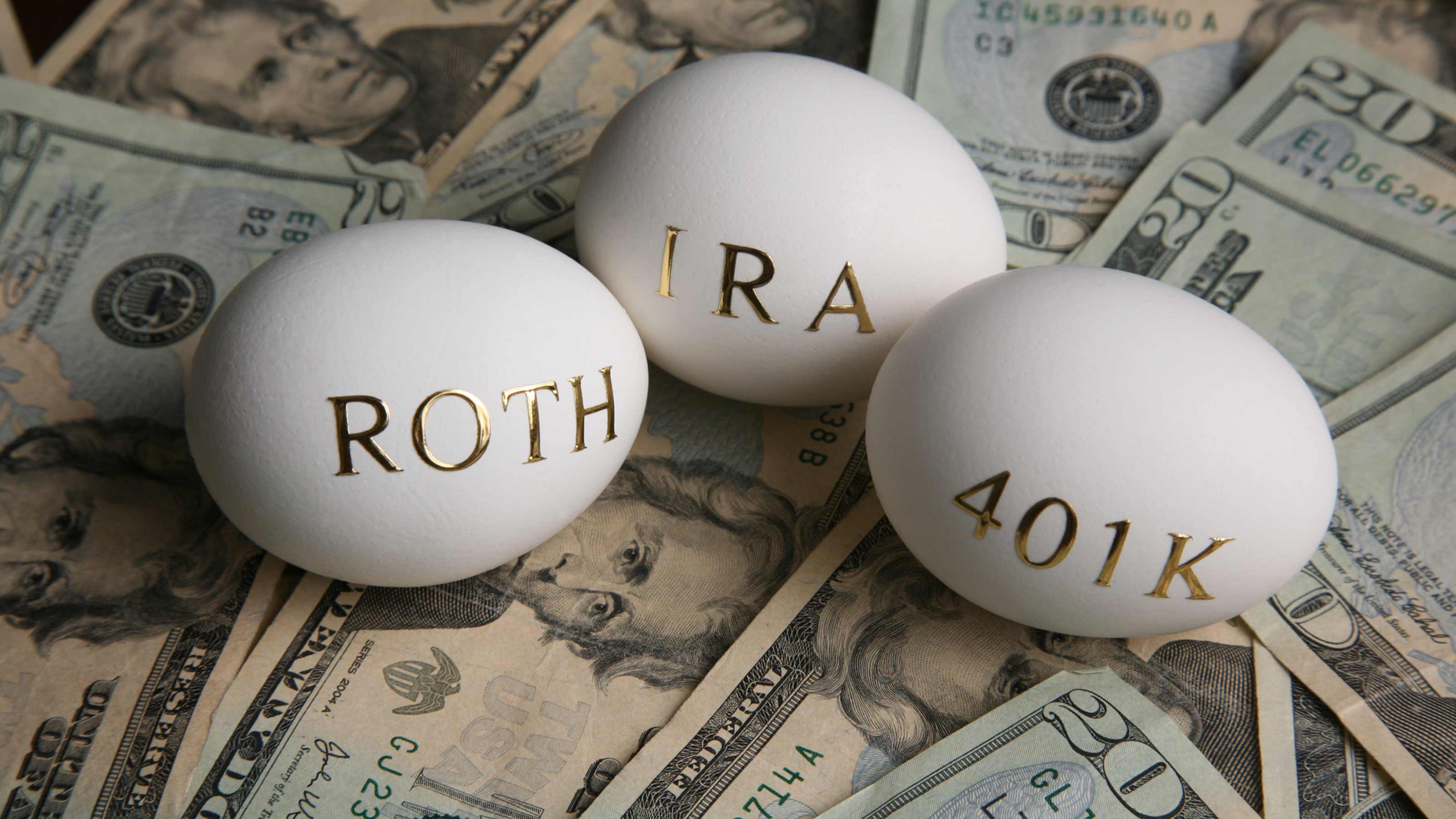Your Guide to Roth Conversions
Like marriage, converting a traditional IRA to a Roth is not a step that should be taken lightly.


Converting a traditional IRA to a Roth can shield your retirement savings from future tax increases, but there are pitfalls and trapdoors, too. You’ll owe taxes on a conversion, and the up-front tax bill could be higher than you expected—particularly if the conversion pushes you into a higher tax bracket. If your income tax rate drops significantly after you retire, the tax advantages could be modest or nonexistent. And as with any financial transaction that intersects with the tax code, you—or your financial adviser—must comply with multiple rules and regulations to avoid running afoul of the IRS.
Because many people, including retirees, believe taxes will rise in the future, Roth conversions are “trendy,” says Evan Beach, a certified financial planner with Campbell Wealth Management, in Alexandria, Va. “But you see people get overenthusiastic about it, and they don’t know what they’re doing.”
Until recently, if you converted an IRA to a Roth, the law let you have a do-over. Before 2018, taxpayers who converted an IRA to a Roth had until the tax-extension deadline—typically October 15—of the year following the year they converted to change their minds. If you discovered after the fact that you couldn’t pay taxes on the conversion, you could simply put the money back into your traditional IRA and go about your business. Likewise, if the value of your IRA dropped significantly after you converted, you could undo the conversion and avoid paying taxes on phantom income.
From just $107.88 $24.99 for Kiplinger Personal Finance
Become a smarter, better informed investor. Subscribe from just $107.88 $24.99, plus get up to 4 Special Issues

Sign up for Kiplinger’s Free Newsletters
Profit and prosper with the best of expert advice on investing, taxes, retirement, personal finance and more - straight to your e-mail.
Profit and prosper with the best of expert advice - straight to your e-mail.
The Tax Cuts and Jobs Act eliminated this option, so make sure you’re prepared to pay the tax bill before you take the leap. Fortunately, nothing in the law says you must convert your entire IRA at once, and for many people, a series of partial conversions over several years is one of the most effective ways to avoid regrets.
The Sweet Spot for Conversions
A refresher: When you convert money in a traditional IRA to a Roth, you must pay taxes on the amount you convert (although part of the conversion will be tax-free if you’ve made nondeductible contributions to your IRA). There are no age or income restrictions on Roth conversions.
Once you’ve converted, all withdrawals are tax-free as long as you are 59½ or older and have owned a Roth for at least five years. Unlike traditional IRAs and other tax-deferred accounts, Roths aren’t subject to required minimum distributions at age 72. So if you don’t need the money, you can let it continue to grow, tax-free.
Older retirees were particularly enthusiastic about Roth conversions in 2020 after Congress enacted the coronavirus stimulus package, which, among other things, allowed retirees who were 72 or older to skip required minimum distributions for the year. Ordinarily, retirees who are 72 or older can’t convert money in a traditional IRA (or other tax-deferred accounts) to a Roth until they’ve taken their RMDs—which could result in a hefty tax bill. With the minimum distribution requirement waived, retirees could convert money directly to a Roth, and many did. The waiver was set to expire on December 31, and it’s unlikely Congress will extend it. So if you’re 72 or older and converting in 2021, you need to be mindful of the costs of converting.
That’s why many planners believe the period between the time you retire and the time you turn 72 is the sweet spot for Roth conversions. There’s a good chance your income will drop after you stop working, and until you are required to start taking distributions, you have some control over the amount of income you receive each year. That will help you lower the tax bill on your Roth conversion.
Trapdoors
But even within that time period, there are potentially negative consequences to a conversion, particularly for retirees. What to watch out for:
Medicare high-income surcharge. In 2021, the standard premium for Medicare Part B, which covers doctor visits and outpatient services, is $148.50. But if a Roth conversion increases your modified adjusted gross income above a certain amount, you could pay much more than that. In 2021, high earners will pay from $208 to $505 per month for Part B. Your inflated MAGI could also increase premiums for Medicare Part D, which covers prescription drugs.
Here’s where it gets tricky: Medicare surcharges are based on your tax return from two years ago. For example, the Medicare high-income surcharge for 2021 will be based on beneficiaries’ 2019 tax returns. (Medicare does provide exemptions from the surcharge for certain life events, but a Roth conversion isn’t one of them.)
Because of the delay, the surcharge sometimes catches retirees by surprise, says Mark Beaver, a CFP in Dublin, Ohio. “In some cases, it’s hundreds of dollars more per person because of where their income was two years ago,” he says.
Keep in mind, though, that a Roth conversion could offset the costs of Medicare premiums in the future, says Ed Slott, founder of IRAHelp.com. Withdrawals from a Roth won’t affect the formula used to calculate surcharges. You won’t have to worry about RMDs, either, because you’re not required to take them from a Roth IRA. “You get hit for one year, and then you’re tax-free forever,” he says.
That said, you should factor in the potential for a one-year hike in Medicare premiums, along with the tax bill, when calculating the cost of a Roth conversion. One way around this problem is to convert when you’re 62, which will avoid the two-year look-back that begins once you turn 65 and sign up for Medicare.
Social Security benefits. While the Medicare high-income surcharge is the priciest potential consequence of a Roth conversion, there are other ways it could hike your taxes, too. The additional income from a Roth conversion could increase the portion of Social Security benefits that are subject to federal income taxes. Up to 85% of your Social Security benefits are taxable, depending on income from other sources, such as a job, a pension, withdrawals from an IRA or a Roth conversion. Thirteen states tax Social Security benefits, too.
Taxes on Social Security are based on your provisional income, which is equal to the combined total of half of your Social Security benefits, any tax-exempt interest you earned during the year, and non–Social Security income that’s included in your adjusted gross income (minus certain deductions and exclusions). If your provisional income is between $25,000 and $34,000 and you’re single, or between $32,000 and $44,000 and you file jointly, up to 50% of your benefits may be taxable. If your provisional income is more than $34,000 and you’re single, or more than $44,000 and you’re married filing jointly, up to 85% of your Social Security benefits may be taxable. This threshold isn’t adjusted for inflation, so the number of retirees who owe taxes on their benefits has increased every year.
One way around this problem is to delay taking Social Security benefits until after you’ve converted money to a Roth. There are other advantages to this strategy: If you wait until age 70 to claim benefits, you’ll receive delayed-retirement credits of 8% of your benefits for every year you wait past your full retirement age (66 for those born between 1943 and 1954). Once you’ve converted money to a Roth, withdrawals won’t affect your provisional income.
Taxes on investment income. Most taxpayers pay a 15% capital gains rate on income from long-term capital gains and qualified dividends. If your income is low enough—up to $40,400 in 2021, or $80,800 for married couples who file jointly—you qualify for a 0% rate on capital gains, which can be a sweet deal for retirees.
But because a Roth conversion will increase your taxable income, taxes on your investment income could go up, too. The income from the conversion could easily disqualify you for the 0% rate, and if your conversion is very large, it could force you to pay 20% on your capital gains. That rate kicks in when your 2021 taxable income tops $445,850 ($501,600 for married couples who file jointly). Add in the 3.8% Medicare surtax on net investment income if your modified adjusted gross income tops $200,000 ($250,000 for married couples), and the top capital gains rate is 23.8%.
What the Future Holds
Unless it’s part of your estate plan (see below), a Roth conversion is a bet that in the future your tax rates will be higher than—or at the very least, the same as—they are now. Given the size of the federal government’s budget deficit, the likelihood of future stimulus spending and the election of Joe Biden, who wants to raise taxes on high earners, that seems like a safe bet—particularly when you consider that current tax rates are historically quite low. Even if your tax rate remains about the same after you retire, there’s a good chance that RMDs will push you into a higher bracket when you start taking them at age 72.
But if you convert when you’re in your peak earning years, that bet may not pay off, says Beach. You’re better off waiting until after you retire, when your income will likely decline. Even then, you may be better off doing a series of conversions over a period of years, he says. Ideally, you should convert just enough to remain within your tax bracket. A CFP or an accountant can help you figure out how much you can convert without jumping to a higher bracket.
Richard Vazza, a CFP with Driven Wealth Management, in San Diego, says he rarely recommends that clients convert their entire IRA at once unless their circumstances have put them in a good position to offset the tax bill. If you saw your income drop in 2020 because of a furlough, a reduction in hours or unemployment, converting your entire IRA could make sense—assuming you can pay the tax bill without draining your emergency fund.
How to Contribute to a Roth
There’s no age limit on making contributions to a new Roth or one you already have, as long as you have earned income. If you’re retired and have a part-time job, for example, you could invest in a Roth. You can’t contribute more than you earned, so if you want to contribute the maximum—$7,000 for individuals age 50 and older in 2021—you must have at least that much in earnings.
There are also income cutoffs for Roth IRAs. In 2021, single taxpayers must have adjusted gross income of $125,000 or less to make a full contribution; the amount phases out for those with AGI of up to $140,000. For married couples who file jointly, the income cut-off phases out between $198,000 and $208,000.
If you’re still working and your employer offers a Roth 401(k), contributing to that account is another way to add one to your retirement portfolio. There are no income restrictions for Roth 401(k) contributions. As with regular Roth IRAs, contributions are after-tax, but withdrawals are tax- and penalty-free as long as you’ve had the account for five years and are at least 59½ when you take the money out.
One caution: Unlike regular Roths, Roth 401(k)s are subject to required minimum distributions when you turn 72. You can get around this problem by rolling your Roth 401(k) into a regular Roth IRA when you leave your job.
A Legacy Your Children Will Love
Some retirees convert their IRAs to Roths even if they’re not convinced the move will pay off. The reason? It will almost certainly pay off for their heirs. A Roth was always a great way to leave money to your children, but legislation enacted in late 2019 made it even more attractive.
Under the Setting Every Community Up for Retirement Enhancement (SECURE) Act, children and other nonspouse heirs who inherit traditional IRAs no longer have the option of stretching required minimum distributions over their lifetimes. Instead, they must deplete the accounts within 10 years of the original owner’s death. (This only applies to nonspouses; spouses can roll inherited IRAs into their own accounts and delay RMDs until they’re 72.) Because those RMDs are taxable, that could force them to pay taxes while they’re in their peak earning years.
Inherited Roths must also be cleaned out within 10 years, but those distributions are tax-free. That means heirs could wait until the 10th year to deplete the account and enjoy nine years of tax-free growth.
Profit and prosper with the best of Kiplinger's advice on investing, taxes, retirement, personal finance and much more. Delivered daily. Enter your email in the box and click Sign Me Up.

Block joined Kiplinger in June 2012 from USA Today, where she was a reporter and personal finance columnist for more than 15 years. Prior to that, she worked for the Akron Beacon-Journal and Dow Jones Newswires. In 1993, she was a Knight-Bagehot fellow in economics and business journalism at the Columbia University Graduate School of Journalism. She has a BA in communications from Bethany College in Bethany, W.Va.
-
 The Best Vanguard Bond Funds to Buy
The Best Vanguard Bond Funds to BuyInvestors seeking the best Vanguard bond funds can pick between mutual funds and ETFs spanning maturities, credit qualities, tax treatment and geographies.
-
 Are You Afraid of an IRS Audit? 8 Ways to Beat Tax Audit Anxiety
Are You Afraid of an IRS Audit? 8 Ways to Beat Tax Audit AnxietyTax Season Tax audit anxiety is like a wild beast. Here’s how you can help tame it.
-
 The Kiplinger Letter's 10 Forecasts for 2026
The Kiplinger Letter's 10 Forecasts for 2026The Kiplinger Letter Here are some of the biggest events and trends in economics, politics and tech that will shape the new year.
-
 New 2026 Tax Change Could Mean More for Your IRA and 401(k) Savings
New 2026 Tax Change Could Mean More for Your IRA and 401(k) SavingsRetirement Savings Here's how the new IRS inflation adjustments will increase the contribution limits for your 401(k) and IRA in the new year.
-
 6 Tax Reasons to Convert Your IRA to a Roth (and When You Shouldn't)
6 Tax Reasons to Convert Your IRA to a Roth (and When You Shouldn't)Retirement Taxes Here’s how converting your traditional retirement account to a Roth IRA can boost your nest egg — but avoid these costly scenarios.
-
 10 Retirement Tax Plan Moves to Make Before December 31
10 Retirement Tax Plan Moves to Make Before December 31Retirement Taxes Proactively reviewing your health coverage, RMDs and IRAs can lower retirement taxes in 2025 and 2026. Here’s how.
-
 Claiming the Standard Deduction? Here Are Five Tax Breaks for Retirement in 2025
Claiming the Standard Deduction? Here Are Five Tax Breaks for Retirement in 2025Tax Tips If you’re retired and filing taxes, these five tax credits and deductions could provide thousands in relief (if you qualify).
-
 IRS Names Its First CEO: But He’s Also Still Running Social Security
IRS Names Its First CEO: But He’s Also Still Running Social SecurityTax News Will this new role make it difficult to address emerging issues like budget and staffing cuts and customer service concerns?
-
 IRS Phasing Out Paper Checks: What Happens After September 30?
IRS Phasing Out Paper Checks: What Happens After September 30?Tax Changes Avoid delays when IRS tax refunds and Social Security paper checks are cut off. Here’s what to know.
-
 Ask the Editor, September 12: Tax Questions on 529 Plan Rollovers to a Roth IRA
Ask the Editor, September 12: Tax Questions on 529 Plan Rollovers to a Roth IRAAsk the Editor In this week's Ask the Editor Q&A, we answer four questions from readers on transferring 529 plan money to a Roth IRA.
-
 Ask the Editor, August 29: Tax Questions on Estate and Gift Taxes
Ask the Editor, August 29: Tax Questions on Estate and Gift TaxesAsk the Editor In this week's Ask the Editor Q&A, we answer questions from readers on estate and gift taxes.